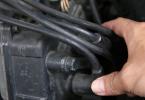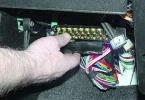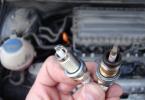The cylinders must burn a mixture containing gasoline and air in a certain proportion. Excessive enrichment results in incomplete combustion, which causes stalls or unsuccessful start attempts. But if we talk about "injectors", excessive depletion of the mixture leads to the same result. Any of the two factors causes the spark plugs to be flooded with fuel - black smoke comes out of the pipe, pops are heard ... And in winter, spark plugs on the injector can flood for other reasons: low evaporation coefficient, non-zero water content.
One of the reasons the effect appears in winter is that the heat value is too high. An example in the video.
They say that when the candles are "flooded", black carbon deposits are formed. Let's clarify: it should not consist of inclusions. All metal, in turn, will be covered with an oily coating. Dry soot looks different ...
Oily layer and dry carbon deposits
The photo shows two cases. “Our Option” is on the right.
Carbon deposits can also be brown. And it always, in 100% of cases, is formed due to flooding with gasoline.
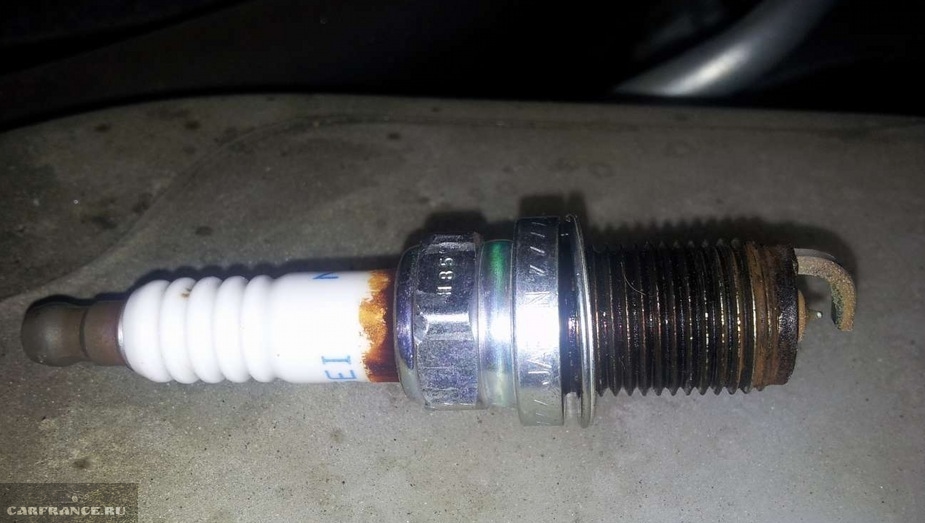
Dark brown carbon deposits
The oily coating, as in photo 1, is, nevertheless, the result of oil ingress. But an oiled candle does not work correctly - it will also be flooded.
With regular "pouring" carbon deposits are formed, which we see in photo 1 on the right and in photo 2. The rest does not apply to our case.
We are looking for the reasons why he fills the candles on the injector
Both a lean and too rich mixture will cause the engine to stall. But the ECU cannot be wrong ... The injectors, in turn, can be clogged - everything is clear here. And in cold weather, the valve may not close properly due to the formed ice.
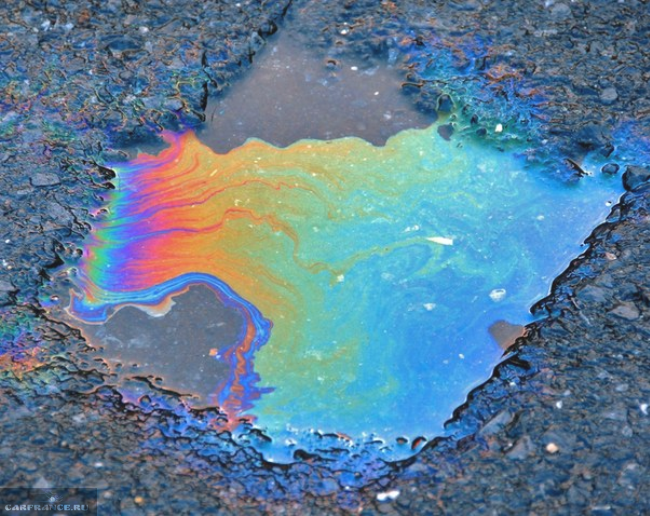
Gasoline slick on the water
Conclusion: It is advisable to use fuel with zero water content. The carburetor with water can simply freeze, and each of the four (six, eight) injectors will fill the candles at start-up.
Main list
The main reasons why the engine fills candles include the following:
- In winter - the presence of water in gasoline;
- The evaporation rate must correspond to the air temperature (season). There is “summer” and “winter” gasoline. By the way, the specified coefficient has nothing to do with the octane number;
- Clogged nozzles - the reason for the preparation of a lean mixture;
- Slow cranking at start is also a common cause;
- Defective valve stem seals contribute to the presence of oil in the combustible mixture.
With the addition of ferrocene additives, the second reason is exacerbated. And the fourth reason is being fought by switching to the use of the "right" oils. The material should not freeze in frost.
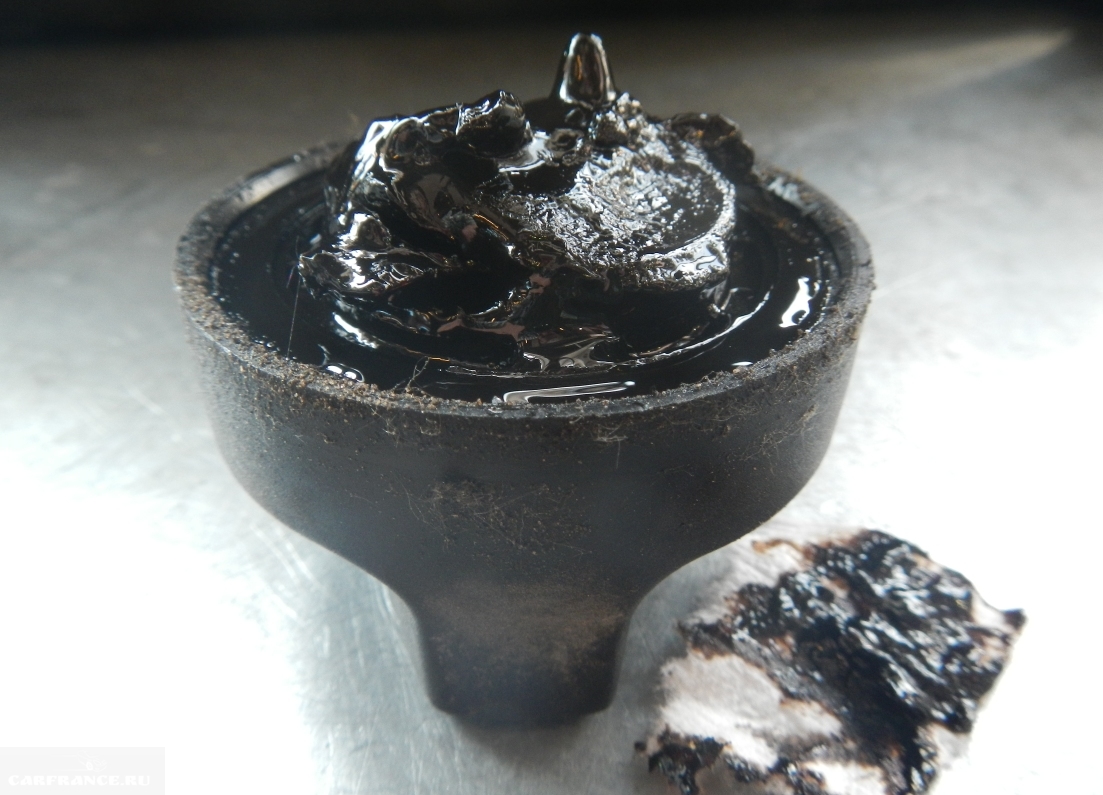
How they do it in practice
It is possible to start an injection internal combustion engine in winter with both winter and summer fuel. It's just that in the second case, the mixture will have to be made lean. The question is how to achieve this ... For example, you can flash a "winter" program. Or do it like this:
- The temperature sensor is temporarily disconnected before starting the engine. Instead, a sensor is put on the plug, warmed up in the hands;
- We are trying to turn on the starter ... The ECU "thinks" that the engine is warmed up, and prepares a leaner mixture than it should be.
Note that the DTOZH sensor will be attached to the thermostat.
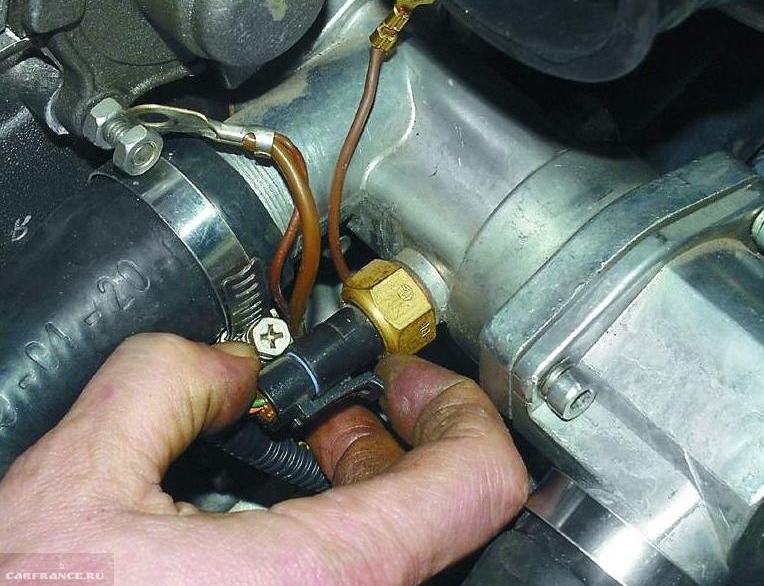
DTOZH ECU connector, VAZ-2114 car
If the number of sensors exceeds 1, turn off the one to which two wires go. It is always connected to the ECU.
Low volatility fuels do not mix well with cold air - the mixture is not homogeneous. But if the concentration is lowered, the problem is solved.
